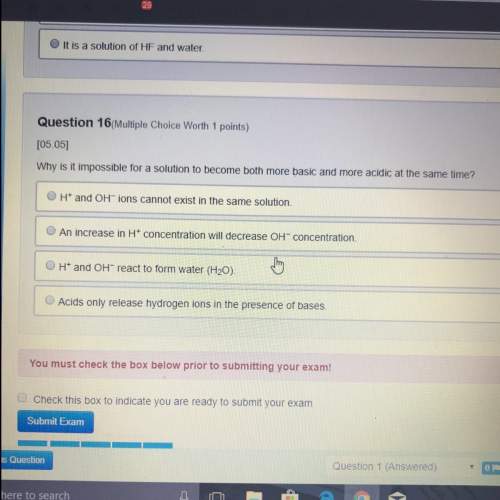
Chemistry, 03.12.2021 16:40 lakiethalucas
Electrophilic aromatic substitutions proceed in two stages. Attack of the aromatic ring on the electrophile. Regeneration of the stable aromatic system by loss of a positively charged unit, usually a proton. Draw one resonance structure for the intermediate formed when the electrophile is attacked by benzene in the reaction above. You do not have to consider stereochemistry. You do not have to explicitly draw H atoms. Do not include lone pairs in your answer. They will not be considered in the grading.

Answers: 1


Other questions on the subject: Chemistry

Chemistry, 22.06.2019 00:00, chameleonsarelife
Select the correct answer. which statement is true about a polarized object? o a. it gains electrons and becomes negatively charged. ob. it gains protons and becomes positively charged. oc. the number of positive and negative charges can be the same. od. it has to be a metal. o e. there is no change in the distribution of the charge in the object. reset next what
Answers: 3


Chemistry, 22.06.2019 13:00, netflixacc0107
Amixture with the same composition throughout is!
Answers: 1

Chemistry, 22.06.2019 14:00, jivsf
The two naturally occurring isotopes of chlorine are 35cl (34.969 amu, 75.77%) and 37cl (36.966 amu, 24.23%). the two naturally occurring isotopes of bromine are 79br (78.918 rm amu, 50.69%) and 81br (80.916 amu, 49.31%). chlorine and bromine combine to form bromine monochloride, brcl. 1. how many peaks will be present in a mass spectrum for brcl? the four combinations of molecule possible given these four isotopes are: 81br37cl, 81br35cl, 79br37cl, and 79br35cl. 2. what are the masses of the four different brcl molecules? express the masses using six significant figures, in decreasing numeric order (highest to lowest), separated by commas.
Answers: 3
You know the right answer?
Electrophilic aromatic substitutions proceed in two stages. Attack of the aromatic ring on the elect...
Questions in other subjects:




English, 06.05.2020 19:04


English, 06.05.2020 19:04

Biology, 06.05.2020 19:04

Mathematics, 06.05.2020 19:04

Mathematics, 06.05.2020 19:04





